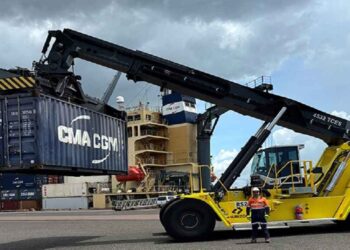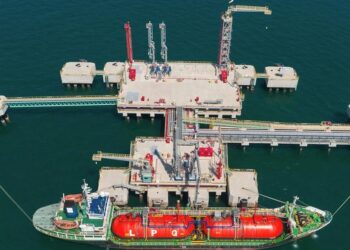Adastra is a trimaran-type superyacht built by McConaghy Boats for Hong Kong-based shipping baron Anto Marden. The 42.5m (140ft) superyacht has been designed by UK-based John Shuttleworth Yacht Designs.
McConaghy Boats has built the superyacht at its establishment in Zhuhai, China. Adastra was launched in April 2012 in the Pearl River, five years after its commissioning. The luxury yacht is reported to have cost $15m and is expected to be used by her owners to travel between the two Indonesian islands that they own.
Adastra has been designed to be lightweight for low fuel consumption. She weighs 52t and has a range of 4,000 nautical miles.
Power trimaran concept and superstructure materials of Adastra
The superyacht is based on a power trimaran concept. Her designers have taken pains to infuse luxury into the trimaran design to make it suitable for ocean voyaging.
Structural analysis was undertaken for all the components of the ship. A computer model of Adastra was tested for wave impact, side slamming and impact of the outrigger riding through waves.
The superstructure of the yacht is made of carbon fibre with a Nomex honeycomb core. The hull is of resin infused epoxy with E-glass and Kevlar skins. The interior is composed of carbon and E-glass honeycomb panels and oak veneered cabinets.The beam of the ship is 16m and the hull draft is 1.12m.
The naval architect of the superyacht was John Shuttleworth Yacht Designs. Exterior styling was done by John Shuttleworth Yacht Designs and Orion Shuttleworth Design, while the structural design was by John Shuttleworth Yacht Designs and Applied Structural Analysis. Adastra’s interiors were designed by Jepsen Designs, of Hong Kong.
Construction of the lightweight superyacht by McConaghy Boats
McConaghy has built the components of Adastra to custom design, to reduce her weight. The in-house built components include fibre hatches, portlights, ladders and hinges, all made of carbon.
More than 350 craftsmen, designers and engineers of McConaghy in both China and Australia worked on the construction of the yacht. The outrigger of the superyacht was specially designed by optimising its height, allowing easier movement on the waves.
Performance of the unique fuel-efficient Adastra yacht
The superyacht has a maximum speed of 22.5 knots. Her range at 17 knots is 4,000 miles.
Adastra’s freshwater capacity is 2,700l. She has two 800gph fresh water makers. Her displacement (light) is 49t while at maximum cruising (with 15,000l fuel) it is 64.8t.The yacht consumes 90l an hour at a speed of 13 knots and 120l each hour at 17 knots.
Accommodation and luxury features of Anto Marden’s superyacht
Adastra can accommodate nine guests and up to six crew. The accommodation is provided on the below deck, which is partitioned into two sections. The master cabin is located aft.
Two guest cabins, crew accommodation and the galley are located near the engine compartment. The central hull has been flared above the waterline to create some additional space on the below deck.
The main deck houses a saloon which encompassed a lounge area, dining table and navigation station. It provides views of the ocean through a window. The saloon is directly accessible from the master cabin.
The sunbed is on the foredeck, while the aft deck has a sofa and bar area and a dining area. There is a raised platform between the saloon and the aft. The pilot house, accommodating the main helm station, is situated on this platform. The station has seating for two.
Tenders onboard Adastra
Adastra can accommodate two tenders. A 4.9m space is made available on the aft deck for a tender. A garage below the deck can shelter a 3.1m tender. The fold-out design of the garage door provides diving space.
Engines fitted and anchor system of the Adastra trimaran superyacht
Adastra has a single Caterpillar C18-1150hp engine at 2,300rpm and two Yanmar 110hp outrigger engines rated at 3,200rpm.
Two 36kw generators are linked to the outrigger engines and one 26kw generator is installed in the main engine room.
The anchoring system of Adastra comprises three anchors. The 130kg Bruce style primary anchor is deployed out of the starboard wing. The 80kg second anchor is deployed out of the bow with an arm.
The third is a stern anchor and weighs 60kg. It is deployed out of the port wing.The anchors are driven on hydraulics-run winches. The carbon-fibre winches and anchor arms were custom-built. The arms fold inside the yacht, thus remaining invisible.
































